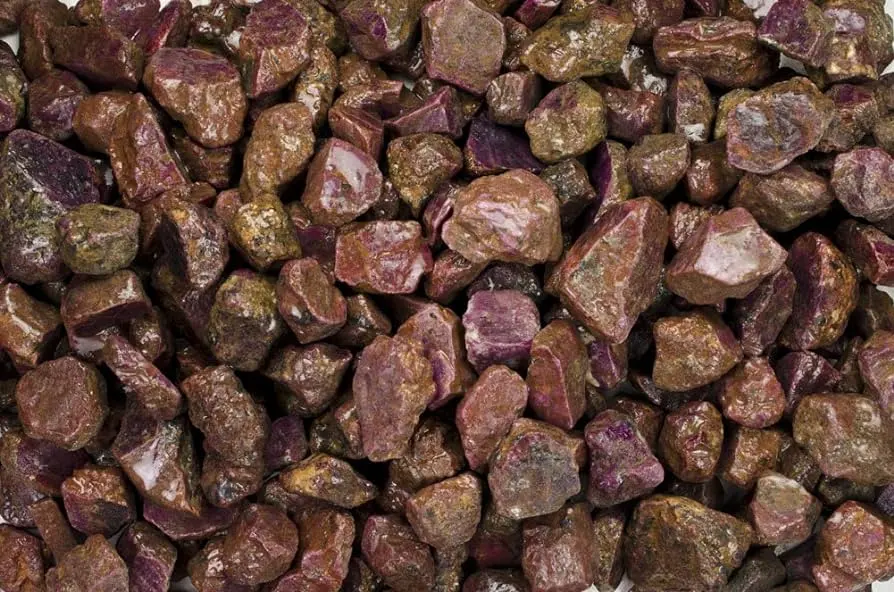Introduction
Corundum, also known as alumina (Al2O3), is a remarkable mineral that has found widespread applications in the ceramics industry. With its exceptional physical and chemical properties, corundum has become an indispensable material for a wide range of ceramic products. In this blog post, we will explore the diverse and crucial applications of corundum in the ceramics industry, highlighting its importance and the latest developments in this field.
Refractory Ceramics
One of the primary applications of corundum in the ceramics industry is in the production of refractory materials. Refractory ceramics are designed to withstand high temperatures, thermal shock, and chemical attacks, making them crucial for various high-temperature industrial processes.
Corundum's high melting point, exceptional thermal stability, and resistance to corrosion make it an ideal raw material for refractory products. Refractory bricks, crucibles, and linings made with corundum are commonly used in the metal, glass, and cement industries, ensuring the stability and efficiency of these high-temperature operations.
Moreover, corundum-based refractory materials are widely used in the construction of furnaces, kilns, and other industrial equipment, where durability and thermal resistance are of paramount importance. The incorporation of corundum in these refractory ceramics not only enhances their performance but also extends the lifespan of the equipment, resulting in significant cost savings and improved productivity.
Electronic Ceramics
The unique electrical properties of corundum have made it a valuable material in the production of electronic ceramics. Corundum's excellent insulating capabilities, high dielectric strength, and low dielectric loss make it a preferred choice for the fabrication of components used in electronic devices and circuits.
One of the prominent applications of corundum in electronic ceramics is in the manufacturing of capacitors. Corundum-based dielectric ceramics are used to produce high-performance, temperature-stable capacitors that are essential for a wide range of electronic applications, from consumer electronics to industrial automation.
Additionally, corundum is used in the production of electronic substrates, such as those found in microelectronic devices and integrated circuits. These substrates provide a stable and insulating platform for the integration of various electronic components, ensuring reliable and efficient device performance.
Furthermore, corundum's piezoelectric properties make it a valuable material in the production of ultrasonic transducers, sensors, and actuators used in a variety of industries, including medical imaging, non-destructive testing, and industrial automation.
Structural Ceramics
The exceptional mechanical properties of corundum, including high hardness, strength, and wear resistance, have made it a key material in the production of advanced structural ceramics. These high-performance ceramic materials are widely utilized in industries where durability, reliability, and dimensional stability are crucial.
Corundum-based structural ceramics find applications in the manufacturing of cutting tools, wear-resistant components, and ballistic armor. The incorporation of corundum enhances the overall performance and longevity of these products, making them suitable for demanding environments and applications.
Moreover, corundum's chemical inertness and resistance to corrosion make it an ideal material for the production of components used in the chemical processing industry, such as valves, seals, and reactor linings. These corundum-based ceramics ensure the integrity and safety of the equipment, even in the presence of harsh chemical environments.
In the aerospace and automotive industries, corundum-based structural ceramics are utilized in the fabrication of engine components, turbochargers, and other high-performance parts. The lightweight and durable nature of these ceramics contribute to improved fuel efficiency, reduced emissions, and enhanced engine performance.
Building Materials
The versatility of corundum has also extended its applications to the construction and building materials industry. In recent years, the incorporation of synthetic corundum into concrete, mortars, and other building materials has gained significant attention.
The addition of corundum to these building materials can dramatically improve their physical and mechanical properties, such as increased compressive strength, abrasion resistance, and fire resistance. This enhanced performance can lead to the development of more durable and long-lasting construction materials, contributing to the sustainability and safety of buildings and infrastructure.
Furthermore, corundum-based paints and coatings have been developed to provide improved protection against wear, weathering, and chemical attacks on building surfaces. These specialized coatings can extend the lifespan of structures, reducing maintenance costs and improving the overall aesthetics of the built environment.
Advancements and Future Trends
The continuous research and development in the field of corundum-based ceramics have led to numerous advancements and innovations that are shaping the future of the ceramics industry.
One such development is the growing use of nanostructured and engineered corundum materials. By controlling the microstructure and composition of corundum at the nanoscale, researchers have been able to develop ceramics with even greater strength, toughness, and functional properties. These advanced corundum-based ceramics hold the potential to revolutionize various applications, from high-performance cutting tools to biomedical implants.
Another emerging trend is the integration of corundum with other materials, such as polymers and metals, to create hybrid or composite materials. These composite ceramics can combine the desirable properties of corundum with the advantageous characteristics of other materials, leading to the development of multifunctional and tailored ceramic products.
Additionally, the ongoing efforts to improve the sustainability and environmental impact of corundum production and processing are crucial for the long-term viability of the ceramics industry. Advancements in energy-efficient manufacturing processes, recycling techniques, and the utilization of renewable resources are expected to enhance the overall sustainability of corundum-based ceramics.
Conclusion
Corundum's versatility and exceptional properties have made it an indispensable material in the ceramics industry. From refractory materials to electronic ceramics, structural ceramics, and building materials, corundum's applications span a wide range of industries, contributing to the advancement of technology and the improvement of our built environment.
As the ceramics industry continues to evolve, the role of corundum is expected to become even more prominent, with ongoing research and development unlocking new frontiers in material science and engineering. By harnessing the full potential of corundum, the ceramics industry can drive innovation, enhance sustainability, and meet the ever-increasing demands of modern society.
